
email us
ted@chattanoogaroofingco.com

call us now
(423) 308-ROOF
Search Results
- Home > Search results for 'asphalt shingles'
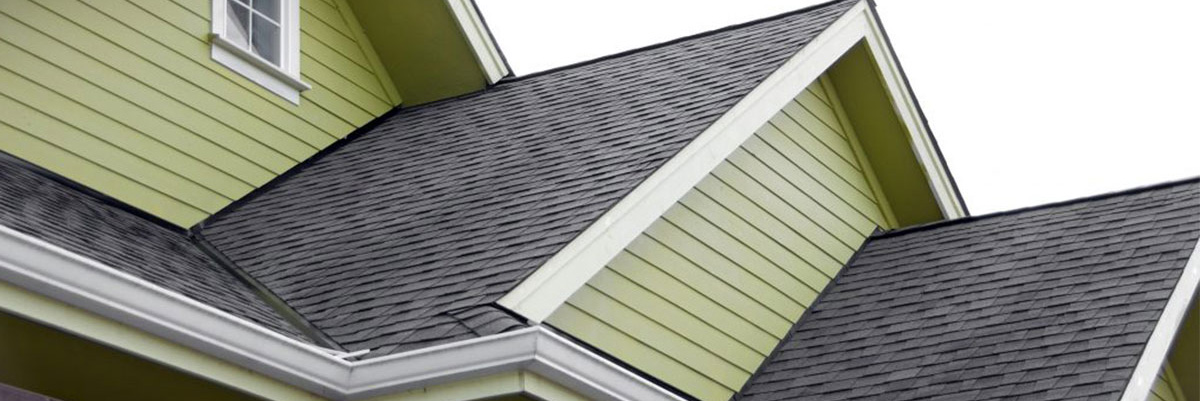
10 Oct. 2023
Roofing
All You Need to Know About Roofing and How to Choose the Best Contractor
When it comes to making sure your roof is in tip-top shape, there’s more to consider than just the cost of materials. Poor workmanship can result in costly damage and repairs down the line. To ensure you get reliable service that meets all of your needs, it’s important to select the right roofing contractor for the job. But before you hire someone, there are a few crucial things you should understand about roofing so you make an informed decision for your home or office. In this blog post, we’ll walk through what you need to know about how roofs function and why quality materials and labor matter—plus provide useful tips on finding a reputable company with competitive rates.
What is roofing and why is it important for your home
Roofing is an essential part of any home construction project, as it serves as the first line of defense against external elements. A well-built roof not only offers protection from natural disasters such as rain and snow but also enhances the aesthetic appeal of your property. The importance of roofing cannot be understated, as faulty installation or repair can lead to significant water damage, electrical problems, and even health hazards due to mold growth. Regular maintenance and inspection of your roofing system is necessary to ensure the safety of your home and the people residing in it. Therefore, investing in high-quality roofing materials and professional services is crucial to safeguarding your home in the long term.
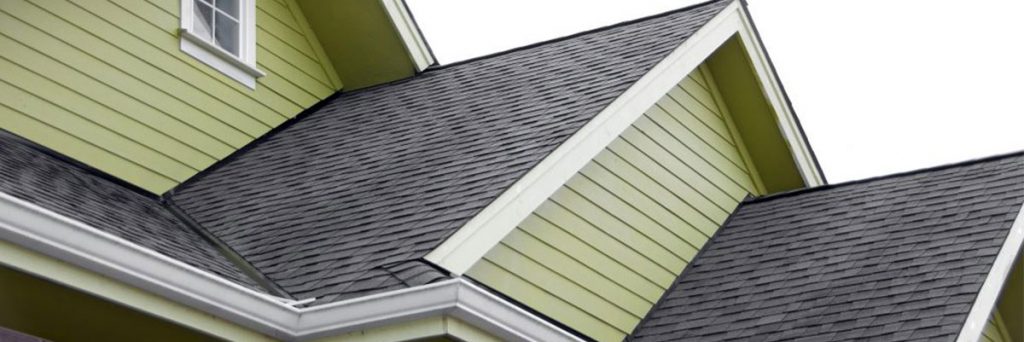
Roofing Services
Different types of roofing materials and which one is best for your home
Choosing the right roofing material for your home is a crucial decision, as it not only protects your home from the elements but also adds to its overall aesthetic appeal. With so many different types of roofing materials available in the market, each with its own set of advantages and disadvantages, it can be overwhelming to decide which one is best suited for your home. From traditional asphalt shingles to eco-friendly options such as metal and clay tiles, each roofing material has its own unique characteristics and benefits. Consulting with a professional roofing contractor can help you identify the best roofing material for your home based on factors such as your climate, budget, and personal preferences. Ultimately, choosing the right roofing material can help ensure that your home remains durable and beautiful for years to come.
Things to consider when choosing the right contractor to install your roof
Installing a roof is a major investment and an essential part of any home or building. When choosing a contractor for this crucial project, there are several things to consider to ensure that you receive quality workmanship and the best value for your money. Firstly, do your research and check the contractor’s credentials, such as licenses, certifications, and insurance. You should also ask for references and reviews from previous clients to gauge their level of expertise and reliability. Price should not be the sole determinant; instead, ensure that the contractor provides a detailed and transparent estimate that covers all the necessary tasks and materials. Additionally, consider the warranty offered and the contractor’s after-sales services. Choosing the right contractor may take time, but it is a crucial step in achieving a sturdy and long-lasting roof for your home or building.
How to prepare for a successful roof installation
Installing a roof is a major undertaking that should not be taken lightly. It’s important to prepare properly to ensure a successful outcome. Start by making sure you understand the scope of the project, including the type of roof you need, the materials required, and the timeframe for completion. Thoroughly research roofing contractors to find one that is licensed, insured, and has a good reputation. Ask for references and check online reviews to make sure they have experience and expertise in your specific type of roofing. Before the installation, clear the area around your home to ensure there is enough space for the contractor’s equipment and workers. Finally, make sure you have a plan in place for protecting your home during the installation process, such as covering windows and landscaping. By taking these steps, you can prepare thoroughly and enjoy a successful roofing installation.
Common mistakes people make when installing a new roof
Installing a new roof is a significant undertaking that requires careful consideration. Unfortunately, many people make common mistakes during the process, leading to costly repairs in the future. One of these mistakes involves underestimating the importance of proper ventilation. Inadequate ventilation can result in moisture buildup, which, in turn, can lead to the growth of mold. Another mistake is using improper flashing techniques, which can allow water to seep into the home and cause structural damage. Additionally, selecting the wrong materials for the specific climate is a common error that can lead to premature wear and tear. To avoid these pitfalls, it is crucial to work with experienced professionals who not only understand these potential issues but also know how to navigate them effectively. By doing so, you can ensure that your new roof performs well and remains in good condition for years to come.
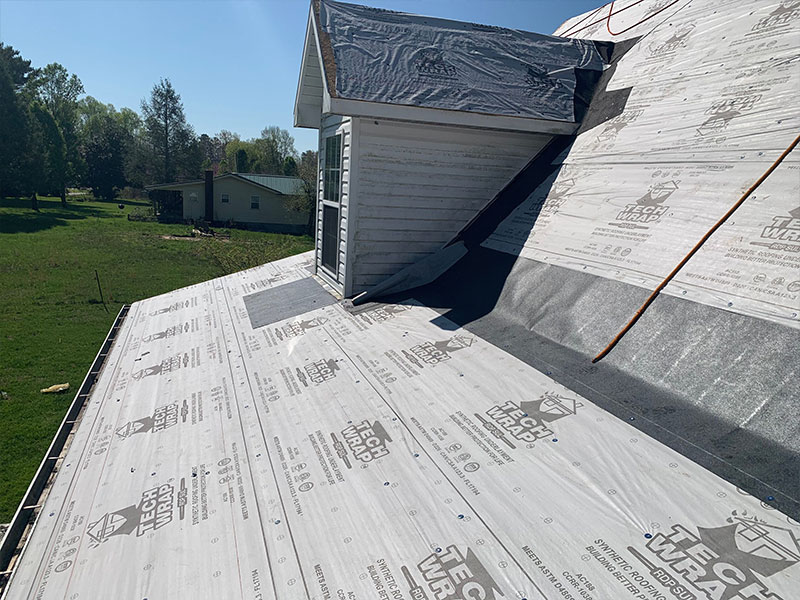
Residential Roofing Services
Tips to maintain your new roof and get the most out of its lifespan
Your new roof is a significant investment in your home, and it can last for decades if you take proper care of it. To ensure that your investment lasts as long as possible, there are several tips that you should follow when it comes to maintaining your new roof. First, make sure to schedule regular inspections with a professional roofing contractor. This will help identify and address any issues before they become costly repairs. Additionally, make sure to keep your roof clean and clear of debris, as this can cause damage over time. Finally, be cautious when it comes to heavy storms or wind, as they can cause significant damage to your roof. By following these tips, you can get the most out of your new roof and help it last for many years to come.
Overall, investing in a quality roof is an important undertaking. Taking the time to familiarize yourself with your options can help you make the best choice when it comes to selecting the right materials and contractors. It’s also important to keep in mind that proper preparation and maintenance are key for getting the most out of your new roof and making sure it will last a long time. Choosing the right materials, and contractor, being prepared for the installation project, and following some basic maintenance tips can all play a part in ensuring a successful installation. With these factors taken into account, you can rest assured that your new roof will provide protection from harsh weather elements for many years to come. If you’re considering installing a new roof or just want to know more about this important home upgrade, don’t hesitate to get in touch with a professional contractor today – they are always available to answer any of your questions and help guide you through this process!
Chattanooga Roofing Company
https://www.google.com/maps?cid=3134983317498625437
https://www.google.com/maps?cid=3134983317498625437
(423) 308-7663
- By: chattroof
- industrial roofing near me, roofing, roofing company, roofing company near me, roofing services, roofing services near me, best roofing services, best roofing services near me, professional roofing sevices, professional roofing near me, residential roofing, commercial roofing, local roofing companies
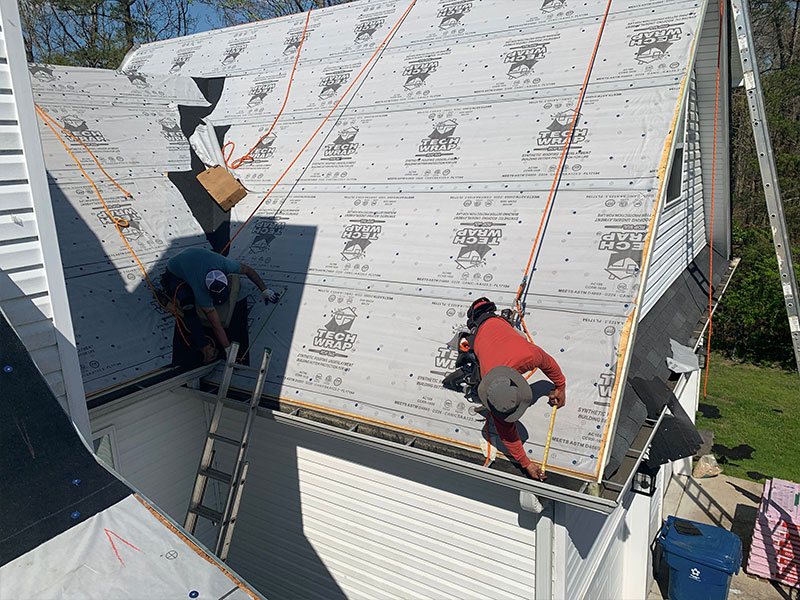
01 Oct. 2023
Best Roofers Near Me Chattanooga Tennessee
Best Roofers Near Me Chattanooga Tennessee
Are you planning to re-roof your home and looking for reliable roofers near Chattanooga Tennessee? You’re not alone – choosing the right contractor can be a difficult process, as it requires finding someone with both the skills and experience to do a quality job. But getting the best roofing services doesn’t have to be stressful! In this blog post, we’ll provide an in-depth look at what factors to consider when selecting local roofers and tips on how to find the right contractors for your project.
Exploring Your Options – Comparing Different Types of Roofers
When considering roofing contractors, it’s important to explore your options and compare different types of roofers. This can help you determine the right professional for your specific roofing needs. To begin, it’s essential to understand the different types of roofers that are available.
Second, commercial roofers are ideal for businesses in need of roof repairs or replacements. These professionals have experience working with large-scale projects such as office buildings, shopping centers, and warehouses. They also have knowledge of different roofing materials and can recommend the most suitable one for your building.
Third, industrial roofers specialize in installing and repairing roofs on factories, manufacturing plants, and other industrial structures. They have experience dealing with unique structures, safety regulations, and specialized roofing materials such as metal, asphalt, and rubber.
Finally, there are freelance or independent roofers who work on smaller residential and commercial projects. These professionals have varied experience and can provide customized solutions for your specific roofing needs.
Choosing a Roofing Company: What You Need to Know
If you’re in need of a roofing company, it’s crucial to make an informed decision and do your research. Don’t settle for just any company when it comes to such an important investment. Here are the key factors to consider:
- Experience and Qualifications: Look for a company with a proven track record and a team of licensed professionals. They should also have certifications and accreditations from reputable organizations.
- Reputation: Check online reviews and ask for references. A trustworthy company will have satisfied customers and a solid reputation in the community.
- Warranty and Guarantees: Make sure the company offers a warranty on their workmanship and materials. This ensures any issues will be addressed.
- Materials and Equipment: The quality of materials and equipment used directly affects the lifespan and durability of your roof. Look for a company that uses high-quality materials and modern equipment.
- Communication and Customer Service: Choose a company that communicates well and values your needs. They should be responsive, keep you informed, and provide excellent customer service.
By considering these factors, you can confidently hire a reliable roofing company that delivers high-quality workmanship and exceptional customer service.
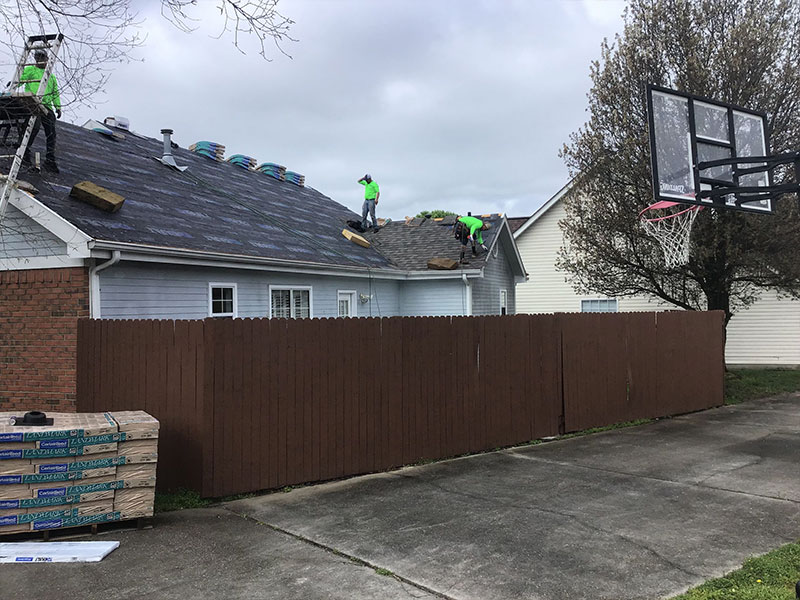
Best Roofers Near Me Chattanooga Tennessee
Getting the Right Price – Tips on Negotiating with Local Roofers
When it comes to finding the right roofer and getting the right price, it can be a challenging task. However, negotiating with local roofers can help you find the best deal that suits your budget and needs. Here are some tips to help you negotiate like a pro:
- Shop around: The first step to getting the right price is to shop around and compare quotes from different local roofers. This will give you an idea of the average cost and help you identify any outliers.
- Know what you want: Be clear about your roofing needs and requirements before you start negotiating. This will help you articulate your needs better and avoid any confusion during the negotiation process.
- Don’t settle for the first offer: Remember that the first price offered by a roofer is not necessarily the best or final price. Don’t be afraid to negotiate and ask for a better deal that meets your needs and budget.
- Ask for references: Before you agree to any deal, ask the roofer for references from previous clients. This will help you get an idea of the quality of their work and their reliability as a service provider.
- Consider the materials: The quality and type of roofing materials used can have a significant impact on the overall price. Make sure you understand the materials being used and their impact on the cost.
- Be respectful: Remember to be polite and respectful during the negotiation process. This will help you build a good relationship with the roofer and increase your chances of getting a good deal.
By following these tips and being prepared, you can secure a deal that meets your needs and budget.
Questions to Ask Potential Contractors – What to Look Out for Before Making a Decision
When you’re seeking to hire a roofing contractor for a project, it’s critical to ask them the right questions to evaluate their suitability. To make an informed decision, consider the following:
- What is your level of expertise in this field? Experienced contractors will have a better understanding of industry practices, safety measures, and common challenges, and should be able to provide information about previous projects they’ve handled.
- Can you give an accurate estimate of the project’s timeline and budget? A competent contractor should evaluate the project and provide you with a realistic estimate that includes contingencies for unforeseen delays, difficulties, and expenses.
- What insurance coverage do you have? You must verify that your contractor has adequate liability insurance to cover any potential damage or injury that may occur during the project.
- What measures do you take to ensure safety on the site? A responsible contractor should take necessary steps to ensure that their work doesn’t pose a threat to your property or the health of people living or working nearby.
- Are there any necessary permits or approvals required for this project? A qualified contractor should know which permits or licenses from local authorities are needed for a specific project and should be able to acquire them on your behalf.
- Can you provide references or reviews from previous clients? A trustworthy contractor would be proud to share positive feedback from happy clients and have a track record of delivering projects on time and within budget.
- What is your preferred method of communication during the project? An effective communication strategy is critical to ensure the project runs smoothly, and the contractor should be willing to keep you updated regularly.
By asking these questions, you’ll be able to evaluate potential contractors and make a well-informed decision that can help you avoid costly mistakes and ensure the success of your project.
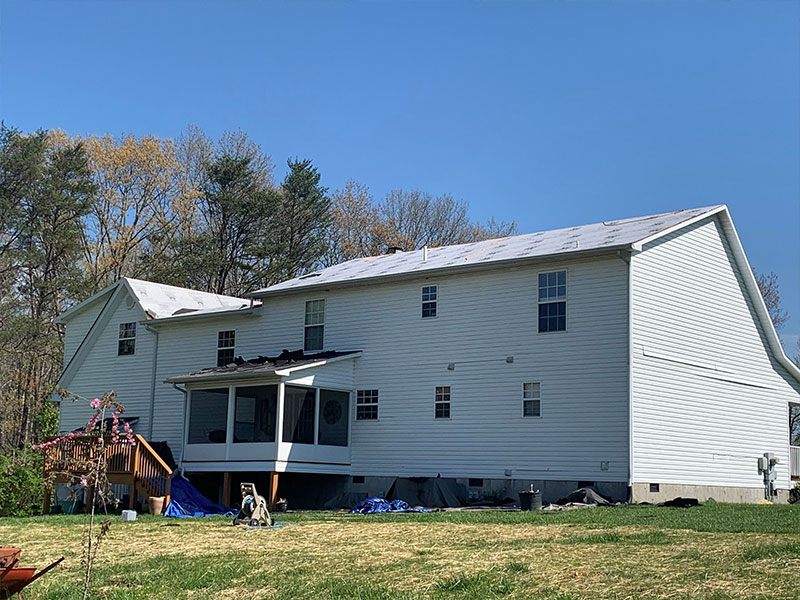
Best Roofers Near Me Chattanooga Tennessee
Maintaining and Inspecting Your Roof: The Key to Safety and Savings
Respecting your rooftop is more than just a good practice – it’s essential for keeping your home or business safe and avoiding expensive repairs. With proper maintenance and inspection practices, you can ensure your roof stays in great shape and remains visually appealing.
Firstly, regular inspections are a must. By identifying and addressing damage or wear and tear early on, you can prevent minor issues from turning into major headaches. Look out for gaps, loose shingles, cracks, and leaks – even seemingly small damage can have disastrous consequences if left untreated.
Secondly, don’t neglect roof cleaning. Regularly removing debris, dirt, and fallen leaves is crucial for preventing clogged gutters. When gutters are clogged, water can build up and seep into your home or business, causing significant damage. Also, be mindful of fallen branches or other physical debris that can potentially harm your roof and lead to leaks.
Additionally, proper ventilation is vital to maintain the structural integrity of your roof. Inadequate ventilation can result in temperature fluctuations that cause shingles to warp or crack, which could ultimately necessitate costly repairs or a full replacement.
Lastly, entrust roof maintenance and inspection to professionals. Their expertise allows them to spot any damage or potential issues early on, preventing them from escalating. Moreover, professionals have the necessary tools and equipment to handle repairs, ensuring your roof remains sturdy and secure.
Following proper maintenance and inspection practices is crucial for extending the lifespan of your roof, preserving its visual appeal, and saving you money.
All in all, it is important to remember that the roof of your home is one of the most important components in protecting its contents and structure. It is also a very large investment, so being informed about what options are available, what price you should pay, who you should hire, and how to properly maintain and inspect it is essential. Utilize the tips provided in this blog post to ensure that you make the right decision when it comes to your roofing needs. If you have any additional questions or would like further advice on choosing and working with your roofer, be sure to reach out to our team and we’d be happy to help.
- By: chattroof
- commercial best roofers near me Chattanooga Tennessee, best roofer near me Chattanooga Tennessee, roofers Chattanooga Tennessee, roofers nearby Chattanooga Tennessee, roofers near me Chattanooga Tennessee, roofers near Chattanooga Tennessee, best roofers near me Chattanooga Tennessee, best roofers near Chattanooga Tennessee, best roofers nearby Chattanooga Tennessee, best roofers in Chattanooga Tennessee, best roofers Chattanooga Tennessee in my area, best roofers Chattanooga Tennessee near me, best roofers Chattanooga Tennessee, best roofers Chattanooga Tennessee nearby, local best roofers near me Chattanooga Tennessee, professional best roofers near me Chattanooga Tennessee
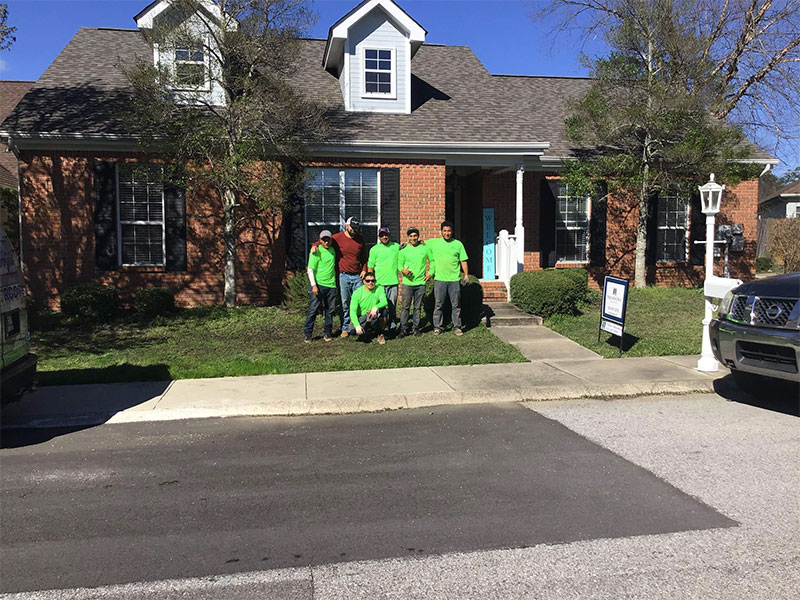
01 Oct. 2023
Best Roofers Near Me Hixson Tennessee
Best Roofers Near Me Hixson Tennessee
Are you planning to re-roof your home and looking for reliable roofers near Hixson Tennessee? You’re not alone – choosing the right contractor can be a difficult process, as it requires finding someone with both the skills and experience to do a quality job. But getting the best roofing services doesn’t have to be stressful! In this blog post, we’ll provide an in-depth look at what factors to consider when selecting local roofers and tips on how to find the right contractors for your project.
Exploring Your Options – Comparing Different Types of Roofers
When considering roofing contractors, it’s important to explore your options and compare different types of roofers. This can help you determine the right professional for your specific roofing needs. To begin, it’s essential to understand the different types of roofers that are available.
Second, commercial roofers are ideal for businesses in need of roof repairs or replacements. These professionals have experience working with large-scale projects such as office buildings, shopping centers, and warehouses. They also have knowledge of different roofing materials and can recommend the most suitable one for your building.
Third, industrial roofers specialize in installing and repairing roofs on factories, manufacturing plants, and other industrial structures. They have experience dealing with unique structures, safety regulations, and specialized roofing materials such as metal, asphalt, and rubber.
Finally, there are freelance or independent roofers who work on smaller residential and commercial projects. These professionals have varied experience and can provide customized solutions for your specific roofing needs.
Choosing a Roofing Company: What You Need to Know
If you’re in need of a roofing company, it’s crucial to make an informed decision and do your research. Don’t settle for just any company when it comes to such an important investment. Here are the key factors to consider:
- Experience and Qualifications: Look for a company with a proven track record and a team of licensed professionals. They should also have certifications and accreditations from reputable organizations.
- Reputation: Check online reviews and ask for references. A trustworthy company will have satisfied customers and a solid reputation in the community.
- Warranty and Guarantees: Make sure the company offers a warranty on their workmanship and materials. This ensures any issues will be addressed.
- Materials and Equipment: The quality of materials and equipment used directly affects the lifespan and durability of your roof. Look for a company that uses high-quality materials and modern equipment.
- Communication and Customer Service: Choose a company that communicates well and values your needs. They should be responsive, keep you informed, and provide excellent customer service.
By considering these factors, you can confidently hire a reliable roofing company that delivers high-quality workmanship and exceptional customer service.
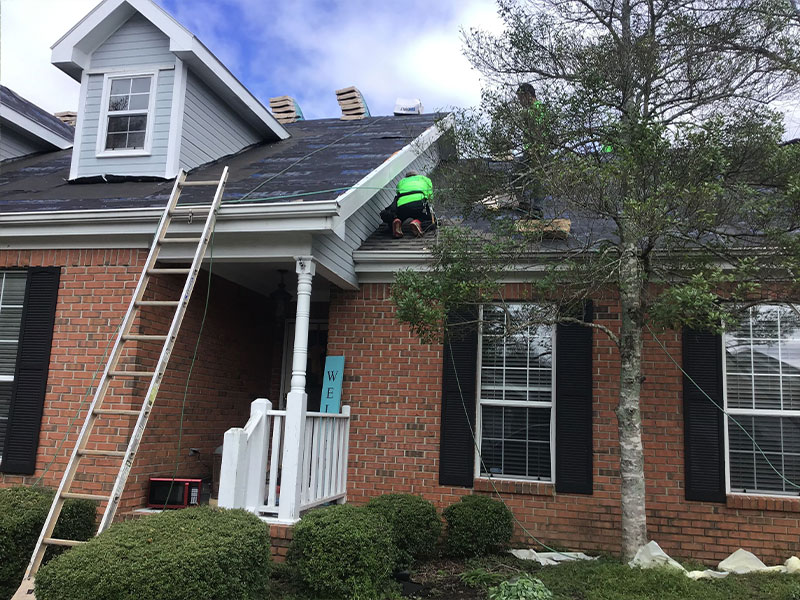
Best Roofers Near Me Hixson Tennessee
Getting the Right Price – Tips on Negotiating with Local Roofers
When it comes to finding the right roofer and getting the right price, it can be a challenging task. However, negotiating with local roofers can help you find the best deal that suits your budget and needs. Here are some tips to help you negotiate like a pro:
- Shop around: The first step to getting the right price is to shop around and compare quotes from different local roofers. This will give you an idea of the average cost and help you identify any outliers.
- Know what you want: Be clear about your roofing needs and requirements before you start negotiating. This will help you articulate your needs better and avoid any confusion during the negotiation process.
- Don’t settle for the first offer: Remember that the first price offered by a roofer is not necessarily the best or final price. Don’t be afraid to negotiate and ask for a better deal that meets your needs and budget.
- Ask for references: Before you agree to any deal, ask the roofer for references from previous clients. This will help you get an idea of the quality of their work and their reliability as a service provider.
- Consider the materials: The quality and type of roofing materials used can have a significant impact on the overall price. Make sure you understand the materials being used and their impact on the cost.
- Be respectful: Remember to be polite and respectful during the negotiation process. This will help you build a good relationship with the roofer and increase your chances of getting a good deal.
By following these tips and being prepared, you can secure a deal that meets your needs and budget.
Questions to Ask Potential Contractors – What to Look Out for Before Making a Decision
When you’re seeking to hire a contractor for a project, it’s critical to ask them the right questions to evaluate their suitability. To make an informed decision, consider the following:
- What is your level of expertise in this field? Experienced contractors will have a better understanding of industry practices, safety measures, and common challenges, and should be able to provide information about previous projects they’ve handled.
- Can you give an accurate estimate of the project’s timeline and budget? A competent contractor should evaluate the project and provide you with a realistic estimate that includes contingencies for unforeseen delays, difficulties, and expenses.
- What insurance coverage do you have? You must verify that your roof contractor has adequate liability insurance to cover any potential damage or injury that may occur during the project.
- What measures do you take to ensure safety on the site? A responsible contractor should take necessary steps to ensure that their work doesn’t pose a threat to your property or the health of people living or working nearby.
- Are there any necessary permits or approvals required for this project? A qualified contractor should know which permits or licenses from local authorities are needed for a specific project and should be able to acquire them on your behalf.
- Can you provide references or reviews from previous clients? A trustworthy contractor would be proud to share positive feedback from happy clients and have a track record of delivering projects on time and within budget.
- What is your preferred method of communication during the project? An effective communication strategy is critical to ensure the project runs smoothly, and the contractor should be willing to keep you updated regularly.
By asking these questions, you’ll be able to evaluate potential contractors and make a well-informed decision that can help you avoid costly mistakes and ensure the success of your project.
Maintaining and Inspecting Your Roof: The Key to Safety and Savings
Respecting your rooftop is more than just a good practice – it’s essential for keeping your home or business safe and avoiding expensive repairs. With proper maintenance and inspection practices, you can ensure your roof stays in great shape and remains visually appealing.
Firstly, regular roof inspections are a must. By identifying and addressing damage or wear and tear early on, you can prevent minor issues from turning into major headaches. Look out for gaps, loose shingles, cracks, and leaks – even seemingly small damage can have disastrous consequences if left untreated.
Secondly, don’t neglect roof cleaning. Regularly removing debris, dirt, and fallen leaves is crucial for preventing clogged gutters. When gutters are clogged, water can build up and seep into your home or business, causing significant damage. Also, be mindful of fallen branches or other physical debris that can potentially harm your roof and lead to leaks.

Best Roofers Near Me Hixson Tennessee
Additionally, proper ventilation is vital to maintain the structural integrity of your roof. Inadequate ventilation can result in temperature fluctuations that cause shingles to warp or crack, which could ultimately necessitate costly repairs or a full replacement.
Lastly, entrust roof maintenance and inspection to professionals. Their expertise allows them to spot any damage or potential issues early on, preventing them from escalating. Moreover, professionals have the necessary tools and equipment to handle repairs, ensuring your roof remains sturdy and secure.
Following proper maintenance and inspection practices is crucial for extending the lifespan of your roof, preserving its visual appeal, and saving you money.
All in all, it is important to remember that the roof of your home is one of the most important components in protecting its contents and structure. It is also a very large investment, so being informed about what options are available, what price you should pay, who you should hire, and how to properly maintain and inspect it is essential. Utilize the tips provided in this blog post to ensure that you make the right decision when it comes to your roofing needs. If you have any additional questions or would like further advice on choosing and working with your roofer, be sure to reach out to our team and we’d be happy to help.
- By: chattroof
- commercial best roofers near me Hixson Tennessee, best roofer near me Hixson Tennessee, roofers Hixson Tennessee, roofers nearby Hixson Tennessee, roofers near me Hixson Tennessee, roofers near Hixson Tennessee, best roofers near me Hixson Tennessee, best roofers near Hixson Tennessee, best roofers nearby Hixson Tennessee, best roofers in Hixson Tennessee, best roofers Hixson Tennessee in my area, best roofers Hixson Tennessee near me, best roofers Hixson Tennessee, best roofers Hixson Tennessee nearby, local best roofers near me Hixson Tennessee, professional best roofers near me Hixson Tennessee
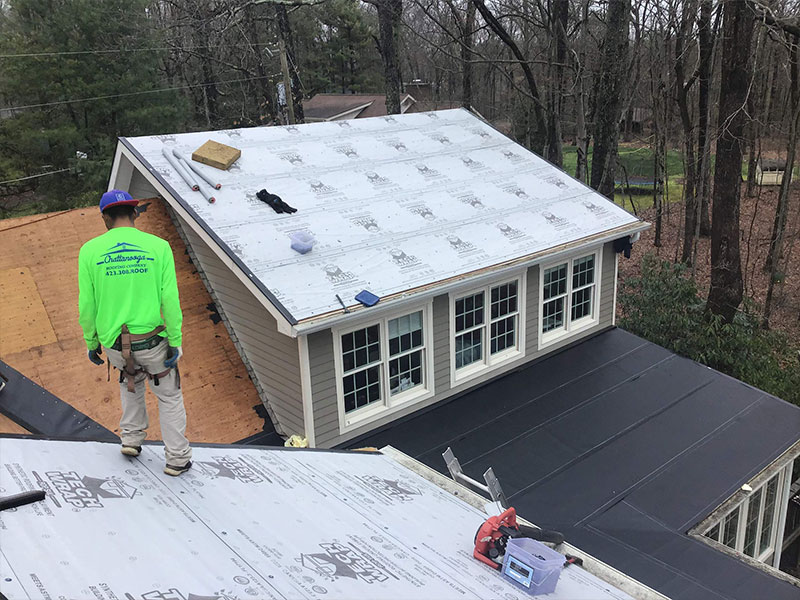
01 Oct. 2023
Best Roofers Near Me Ringgold Georgia
Best Roofers Near Me Ringgold Georgia
Are you planning to re-roof your home and looking for reliable roofers near Ringgold Georgia? You’re not alone – choosing the right contractor can be a difficult process, as it requires finding someone with both the skills and experience to do a quality job. But getting the best roofing services doesn’t have to be stressful! In this blog post, we’ll provide an in-depth look at what factors to consider when selecting local roofers and tips on how to find the right contractors for your project.
Exploring Your Options – Comparing Different Types of Roofers
When considering roofing contractors, it’s important to explore your options and compare different types of roofers. This can help you determine the right professional for your specific roofing needs. To begin, it’s essential to understand the different types of roofers that are available.
First, there are residential roofers who specialize in repairing or replacing roofs on homes. These professionals have experience working with various roofing materials such as asphalt shingles, metal roofing, and tile roofing. They are also knowledgeable about local building codes and regulations, ensuring your roof meets required standards.
Third, industrial roofers specialize in installing and repairing roofs on factories, manufacturing plants, and other industrial structures. They have experience dealing with unique structures, safety regulations, and specialized roofing materials such as metal, asphalt, and rubber.
Finally, there are freelance or independent roofers who work on smaller residential and commercial projects. These professionals have varied experience and can provide customized solutions for your specific roofing needs.
Choosing a Roofing Company: What You Need to Know
If you’re in need of a roofing company, it’s crucial to make an informed decision and do your research. Don’t settle for just any company when it comes to such an important investment. Here are the key factors to consider:
- Experience and Qualifications: Look for a company with a proven track record and a team of licensed professionals. They should also have certifications and accreditations from reputable organizations.
- Reputation: Check online reviews and ask for references. A trustworthy company will have satisfied customers and a solid reputation in the community.
- Warranty and Guarantees: Make sure the company offers a warranty on their workmanship and materials. This ensures any issues will be addressed.
- Materials and Equipment: The quality of materials and equipment used directly affects the lifespan and durability of your roof. Look for a company that uses high-quality materials and modern equipment.
- Communication and Customer Service: Choose a company that communicates well and values your needs. They should be responsive, keep you informed, and provide excellent customer service.
By considering these factors, you can confidently hire a reliable roofing company that delivers high-quality workmanship and exceptional customer service.
Getting the Right Price – Tips on Negotiating with Local Roofers
When it comes to finding the right roofer and getting the right price, it can be a challenging task. However, negotiating with local roofers can help you find the best deal that suits your budget and needs. Here are some tips to help you negotiate like a pro:

Best Roofers Near Me Ringgold Georgia
Shop around: The first step to getting the right price is to shop around and compare quotes from different local roofers. This will give you an idea of the average cost and help you identify any outliers.
- Know what you want: Be clear about your roofing needs and requirements before you start negotiating. This will help you articulate your needs better and avoid any confusion during the negotiation process.
- Don’t settle for the first offer: Remember that the first price offered by a roofer is not necessarily the best or final price. Don’t be afraid to negotiate and ask for a better deal that meets your needs and budget.
- Ask for references: Before you agree to any deal, ask the roofer for references from previous clients. This will help you get an idea of the quality of their work and their reliability as a service provider.
- Consider the materials: The quality and type of roofing materials used can have a significant impact on the overall price. Make sure you understand the materials being used and their impact on the cost.
- Be respectful: Remember to be polite and respectful during the negotiation process. This will help you build a good relationship with the roofer and increase your chances of getting a good deal.
By following these tips and being prepared, you can secure a deal that meets your needs and budget.
Questions to Ask Potential Contractors – What to Look Out for Before Making a Decision
When you’re seeking to hire a contractor for a project, it’s critical to ask them the right questions to evaluate their suitability. To make an informed decision, consider the following:
- What is your level of expertise in this field? Experienced contractors will have a better understanding of industry practices, safety measures, and common challenges, and should be able to provide information about previous projects they’ve handled.
- Can you give an accurate estimate of the project’s timeline and budget? A competent contractor should evaluate the project and provide you with a realistic estimate that includes contingencies for unforeseen delays, difficulties, and expenses.
- What insurance coverage do you have? You must verify that your contractor has adequate liability insurance to cover any potential damage or injury that may occur during the project.
- What measures do you take to ensure safety on the site? A responsible contractor should take necessary steps to ensure that their work doesn’t pose a threat to your property or the health of people living or working nearby.
- Are there any necessary permits or approvals required for this project? A qualified contractor should know which permits or licenses from local authorities are needed for a specific project and should be able to acquire them on your behalf.
- Can you provide references or reviews from previous clients? A trustworthy contractor would be proud to share positive feedback from happy clients and have a track record of delivering projects on time and within budget.
- What is your preferred method of communication during the project? An effective communication strategy is critical to ensure the project runs smoothly, and the contractor should be willing to keep you updated regularly.
By asking these questions, you’ll be able to evaluate potential contractors and make a well-informed decision that can help you avoid costly mistakes and ensure the success of your project.
Maintaining and Inspecting Your Roof: The Key to Safety and Savings
Respecting your rooftop is more than just a good practice – it’s essential for keeping your home or business safe and avoiding expensive repairs. With proper maintenance and inspection practices, you can ensure your roof stays in great shape and remains visually appealing.
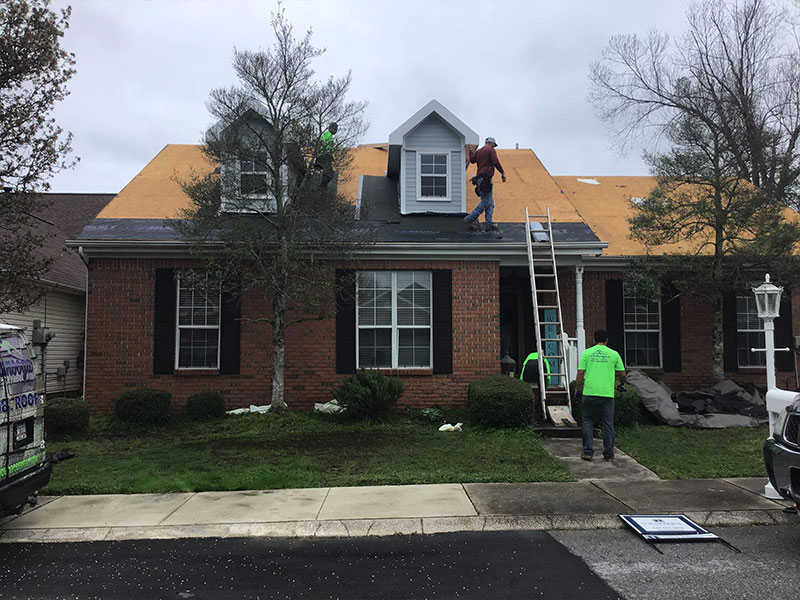
Best Roofers Near Me Ringgold Georgia
Firstly, regular inspections are a must. By identifying and addressing damage or wear and tear early on, you can prevent minor issues from turning into major headaches. Look out for gaps, loose shingles, cracks, and leaks – even seemingly small damage can have disastrous consequences if left untreated.
Secondly, don’t neglect roof cleaning. Regularly removing debris, dirt, and fallen leaves is crucial for preventing clogged gutters. When gutters are clogged, water can build up and seep into your home or business, causing significant damage. Also, be mindful of fallen branches or other physical debris that can potentially harm your roof and lead to leaks.
Additionally, proper ventilation is vital to maintain the structural integrity of your roof. Inadequate ventilation can result in temperature fluctuations that cause shingles to warp or crack, which could ultimately necessitate costly repairs or a full replacement.
Lastly, entrust roof maintenance and inspection to professionals. Their expertise allows them to spot any damage or potential issues early on, preventing them from escalating. Moreover, professionals have the necessary tools and equipment to handle repairs, ensuring your roof remains sturdy and secure.
Following proper maintenance and inspection practices is crucial for extending the lifespan of your roof, preserving its visual appeal, and saving you money.
All in all, it is important to remember that the roof of your home is one of the most important components in protecting its contents and structure. It is also a very large investment, so being informed about what options are available, what price you should pay, who you should hire, and how to properly maintain and inspect it is essential. Utilize the tips provided in this blog post to ensure that you make the right decision when it comes to your roofing needs. If you have any additional questions or would like further advice on choosing and working with your roofer, be sure to reach out to our team and we’d be happy to help.
- By: chattroof
- commercial best roofers near me Ringgold Georgia, best roofer near me Ringgold Georgia, roofers Ringgold Georgia, roofers nearby Ringgold Georgia, roofers near me Ringgold Georgia, roofers near Ringgold Georgia, best roofers near me Ringgold Georgia, best roofers near Ringgold Georgia, best roofers nearby Ringgold Georgia, best roofers in Ringgold Georgia, best roofers Ringgold Georgia in my area, best roofers Ringgold Georgia near me, best roofers Ringgold Georgia, best roofers Ringgold Georgia nearby, local best roofers near me Ringgold Georgia, professional best roofers near me Ringgold Georgia
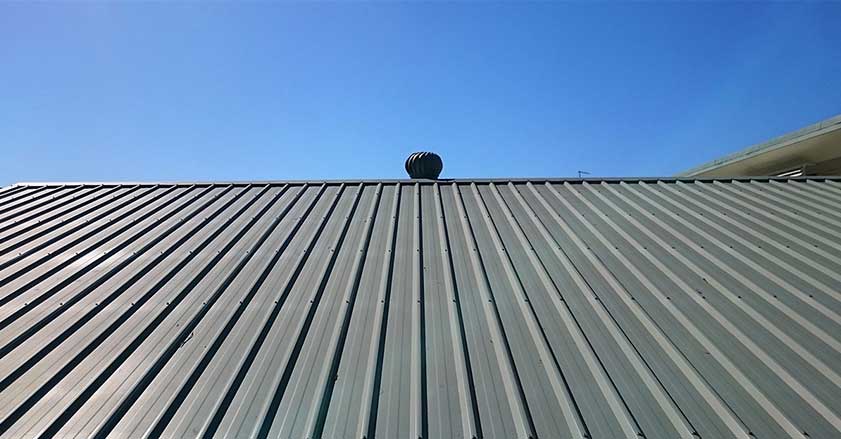
05 Aug. 2023
The 7 Benefits of Investing in a Metal Roof for Your Home
The 7 Benefits of Investing in a Metal Roof for Your Home
Are you considering getting a new roof for your home? If so, metal roofs are becoming an increasingly popular option with homeowners due to their durability, energy efficiency, and fire-resistant qualities. Investing in a metal roof not only provides long-term benefits but also increases the value of your property. Read on to discover the key advantages of opting for this type of roof – from improved protection against extreme weather conditions to potential savings on energy costs.
Durability – Metal roofs are built to last and require little maintenance
Durability is a crucial consideration when choosing roofing materials. Your roof has to withstand the harshest elements: scorching sun, pounding rain, and powerful winds. That’s where metal roofing shines. Built to last, it can withstand extreme weather conditions. Metal roofs are not only sturdy but also require minimal maintenance. Unlike other materials, they don’t rot, warp, or crack. They offer homeowners a long-lasting, low-maintenance solution that not only looks great but also protects their property for years to come.
With metal roofing, you can enjoy peace of mind knowing that your roof will stand strong against whatever nature throws its way. Rain or shine, it will continue to protect your home, keeping you safe and dry. Metal roofs are an investment in the future, providing durability, longevity, and a touch of sophistication.

Metal Roof
Moreover, metal roofing comes in a variety of styles and colors, allowing you to customize your look while maintaining all the benefits. Whether you prefer a classic aesthetic or a modern design, there’s a metal roof option to suit your taste. So, why settle for less when it comes to your home’s protection? Choose metal roofing for superior durability, low maintenance, and unmatched style. Experience the peace of mind that comes with a roof that will last for years to come.
Cost-effectiveness – Metal roofs can save homeowners money in the long run due to their energy efficiency and lower cost of installation
Homeowners seeking cost-effective home improvement solutions often turn to metal roofs. With their energy efficiency, these roofs not only lower utility bills but also provide long-term savings. In addition, metal roofs are an affordable option for budget-conscious homeowners, as they are less expensive to install compared to traditional asphalt shingles. When evaluating the benefits of metal roofs, it becomes apparent that they are a wise financial decision for homeowners who want to improve their property. By choosing metal roofs, homeowners can make a smart investment that not only adds value to their homes but also helps them save money in the long run. With their durability and lower maintenance requirements, metal roofs offer a reliable and long-lasting solution for any homeowner looking for both practicality and style. So, when it comes to choosing the right roofing option, metal roofs are a standout choice that provides a combination of cost-effectiveness, energy efficiency, and aesthetics.
Fire Resistance – Metal roofs can withstand extreme temperatures and help protect your home from fires
Protecting your home from the threat of fire is a top priority for any homeowner. Metal roofing is an excellent choice for those who want to ensure their homes are as fire-resistant as possible. With the ability to withstand extreme temperatures, metal roofs are a reliable and effective defense against wildfires and other sources of heat. Unlike other roofing materials, metal does not burn, crack or warp, which means it maintains its strength and integrity even under the most extreme conditions. Investing in a metal roof is an investment in your home’s safety and protection, as well as your own peace of mind.
Variety of Styles – Homeowners can choose from a variety of metal roof styles to match their home’s aesthetic
Choosing a new metal roof for your home can be an overwhelming task due to the wide array of options available. However, this abundance of choices also presents a unique opportunity to find a style that perfectly complements your home’s aesthetic. Whether you prefer the sleek and modern look of a standing seam roof or the classic charm of a corrugated or tile roof, there is a metal roof style to suit every homeowner’s taste.
The benefits go beyond aesthetics. Metal roofs are not only stylish but also highly durable and energy-efficient, making them a wise investment for any homeowner. With their long-lasting performance and ability to enhance energy efficiency, you can be confident in your decision to choose a metal roof.
Take advantage of the variety of styles and explore the numerous options available to find the perfect fit for your home’s unique character. Don’t rush the decision – give careful consideration to ensure you select a metal roof that will provide both functional and visual appeal for years to come. With the right choice, your new metal roof will not only protect your home but also transform its overall appearance.
Environmentally Friendly – Metal roofs are made out of recycled materials, making them more eco-friendly than other roofing materials
In today’s world, environmental concerns are top of mind for many homeowners. The good news is that there are a variety of ways to make your home more eco-friendly, starting with your roof. Metal roofs, in particular, are a great choice for environmentally conscious homeowners. Unlike other roofing materials, such as asphalt shingles, metal roofs are made out of mostly recycled materials. In fact, some manufacturers claim that up to 95% of the metal used in their products is recycled. This makes metal roofs a fantastic option for those looking to reduce their environmental impact while also enjoying the benefits of a durable, long-lasting roof.
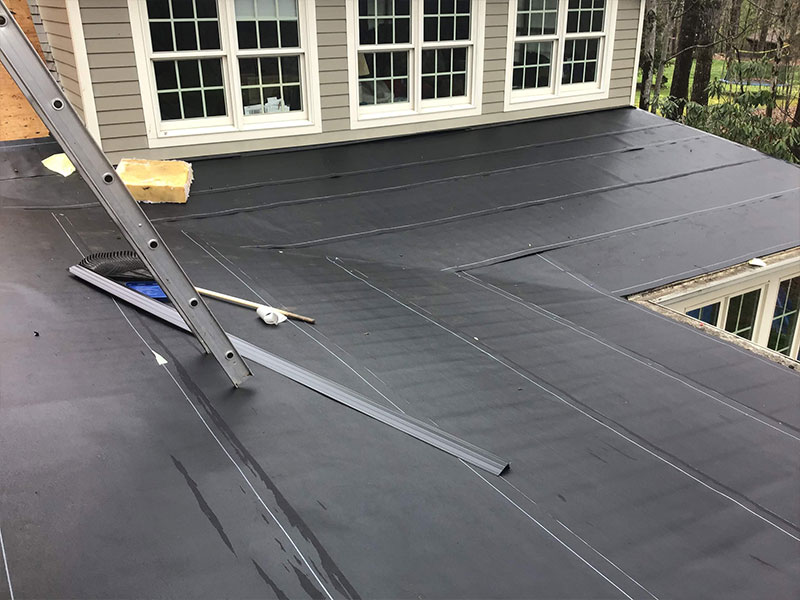
Metal Roof
Easier Installation – Metal roofs are easier to install than other types of roofing materials, making for quick installation times
When it comes to installation, efficiency is key. The good news is that metal roofs are known for being one of the easiest materials to install on a roof. This is because metal roofing comes in larger sheets than typical shingles or tiles. Additionally, the sheets can be easily bent and curved to fit around corners and edges without the need for complicated cutting or manipulation. This makes the installation process quick and painless for both contractors and homeowners. Not only is the process streamlined, but it can also save time and labor costs in the long run. So if you’re looking for a roofing material that won’t slow down your project, be sure to consider metal roofing for its ease of installation.
Stylish Look – Metal roofs offer a sleek, modern look that adds value to any home
Metal roofs have become increasingly popular in recent years due to their stylish and modern appearance. They have a sleek and streamlined design that adds a touch of elegance and luxury to any home. The clean lines and metallic finish of these roofs are eye-catching and aesthetically appealing, making them a desirable choice for homeowners looking to increase the value of their property. Furthermore, metal roofs are durable and long-lasting, providing both functional and aesthetic benefits. Invest in a metal roof for your home to achieve a chic and sophisticated look that will stand the test of time.
In conclusion, metal roofs offer homeowners a great return on their investment. With their durability, cost-effectiveness, fire resistance, variety of styles, environmental friendliness, quicker installation times, and stylish look, it’s easy to see why metal roofing is quickly becoming the number one choice for homeowners and businesses looking for reliable roofing solutions. If you’re interested in finding out more about what metal roofs could do for your home or business, contact your local metal roofing professionals today to discuss options and pricing.
Chattanooga Roofing Company
https://www.google.com/maps?cid=3134983317498625437
https://www.google.com/maps?cid=3134983317498625437
(423) 443-4174
- By: chattroof
- metal roofs cost, metal roofs prices, rates of metal roofs, cost of metal roofs, metal roofs, prices of metal roofs, metal roofs near me, metal roofs nearby, metal roofs in my area, best metal roofs, best metal roofs near me, best metal roofs nearby, best metal roofs in my area, metal roofs installers, metal roofs installing, best metal roofs installer, metal roofs rates
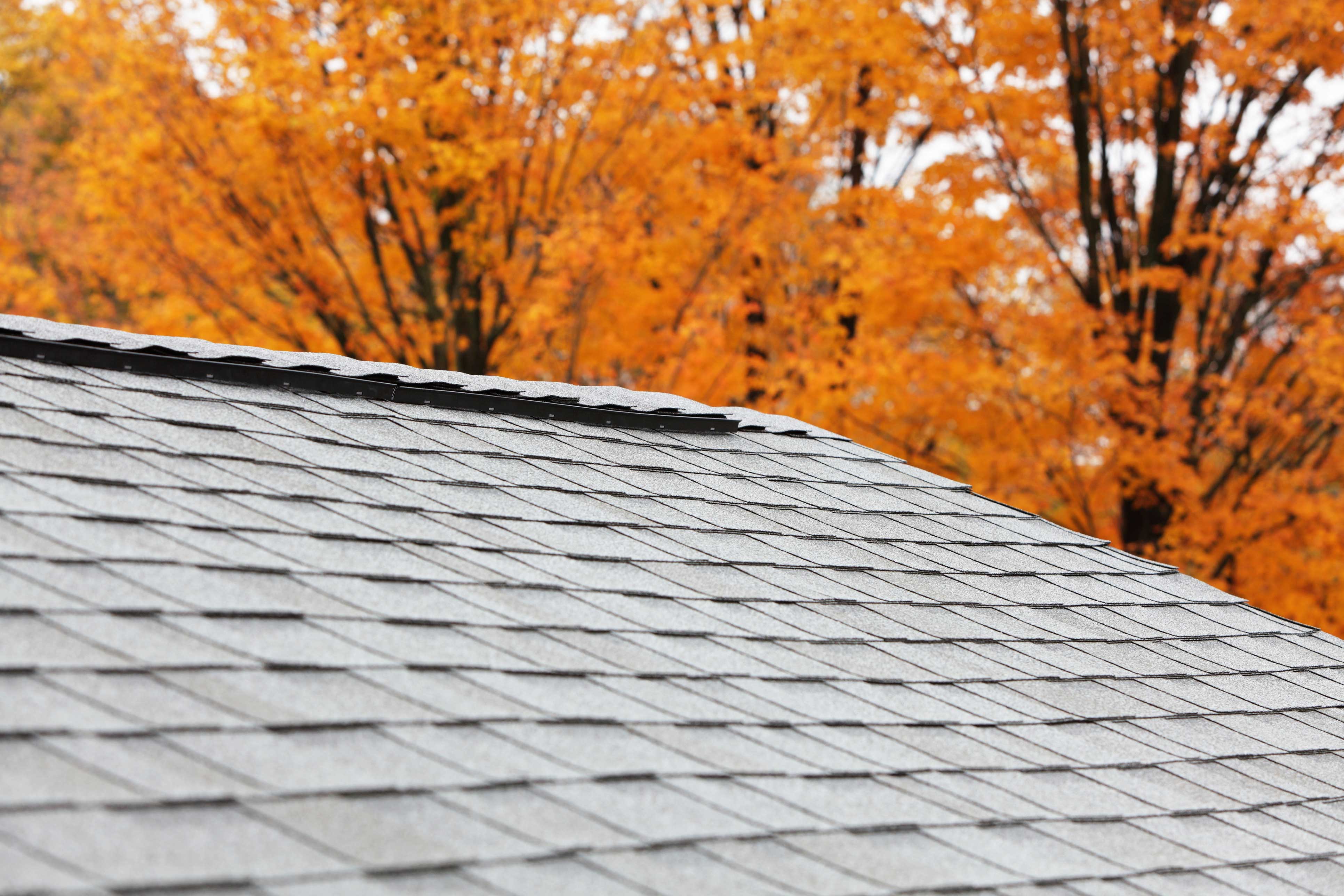
19 Jul. 2023
Roof Installation
Roof Installation Costs: What to Expect and How to Budget
Are you currently building a new home or considering a roof replacement? You might have heard that roof installation costs can vary significantly. So, what factors contribute to these fluctuating prices and how can you budget for them properly? In this post, we’ll dive into the elements related to installing a new roof and share valuable tips from industry experts to help you make an informed decision on this major investment. Expect to explore the costs involved in roof installation and receive practical advice on creating an effective budgeting plan. Whether you’re a homeowner or a contractor, this information will guide you through the process, ensuring a successful and cost-effective project.
Understand the different types of roofs and their associated costs
Investing in a new roof can seem overwhelming and costly for any homeowner. With numerous roofing options available, understanding the costs involved is crucial before making a decision. One common and affordable choice is asphalt shingles; however, they have a shorter lifespan and may require frequent repairs. On the other hand, metal roofs are pricier upfront but can last up to 50 years with proper upkeep. Clay tiles and slate also offer unique benefits but come with their own costs. By carefully considering your budget, and long-term goals, and weighing the pros and cons of each roof type, you can confidently select the best roofing solution for your home. Making an informed decision ensures you choose a roof that not only suits your needs but also enhances the overall aesthetic and durability of your home. So, whether it’s asphalt shingles, metal roofs, clay tiles, or slate, prioritize your preferences and make a wise investment that will protect your home for years to come.
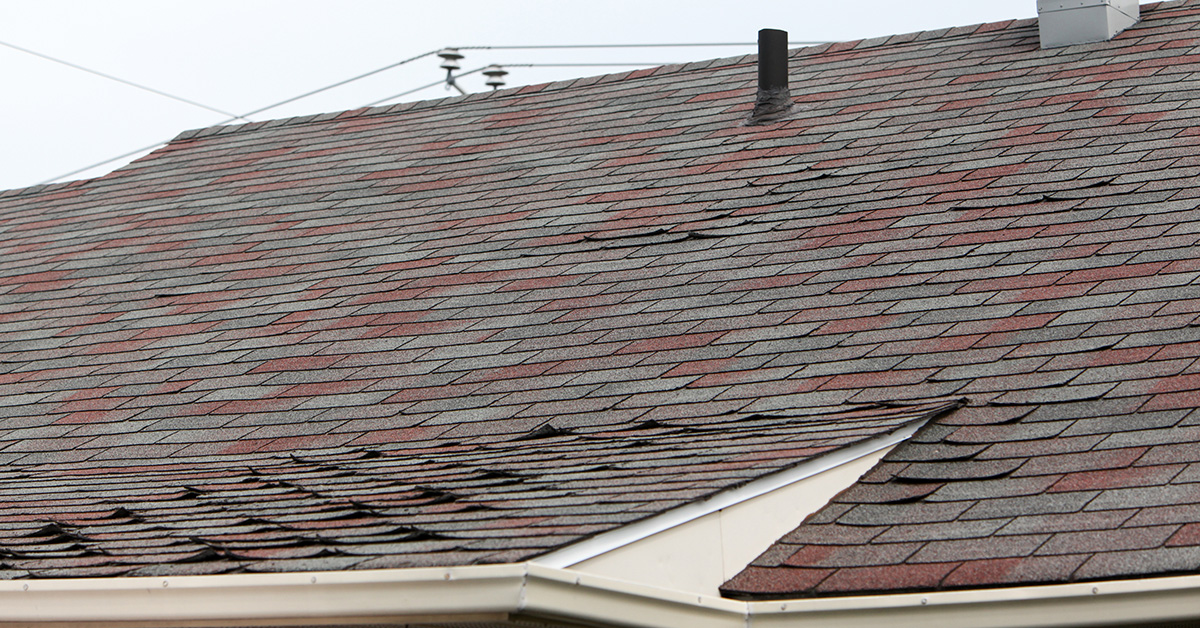
Roof Installation
Research local contractors to determine a reasonable budget for installation
Are you considering a roof replacement for your home? Don’t worry, I’ve got you covered! Taking some time to research local contractors is a crucial first step in determining a reasonable budget for your project. With numerous options available, it can certainly feel overwhelming to choose the right contractor that meets your specific needs. However, fear not! By conducting your due diligence and carefully comparing quotes and reviews, you can rest assured that you’ll receive excellent quality work at a fair price. A new roof not only enhances your home’s curb appeal but also adds value to your property. It’s definitely worth investing in the right team to ensure a beautiful and functional new roof. So why wait? Get started on your research journey today and take the first exciting step towards transforming your home with a stunning and reliable new roof!
Learn about building codes and permits required for roof installations
When it comes to installing a new roof on your home, there’s more to consider than just the color and style. Building codes and permits play a vital role in the process that should not be overlooked. These regulations are in place to ensure the safety and standard of your roof construction. It’s crucial to be aware of the specific codes and permits required for your installation, as they may vary based on your location. Staying up-to-date and conducting thorough research on local requirements is key to avoiding costly mistakes and setbacks in your project.
A well-built roof not only enhances the aesthetics of your home but also provides essential protection for your family. Therefore, it’s worth the effort to understand and adhere to these regulations. By following the necessary guidelines, you can create a secure and stylish roof that offers peace of mind. Remember, it’s not just about the color and style, but also about following the rules and building a roof that stands the test of time.
Understand the difference between labor costs and materials costs
Roof installation is a critical aspect of any house. It requires professional expertise and is a significant investment. When considering a roofing project, it’s important to understand the difference between labor costs and material costs.
Labor costs encompass the expenses incurred by the contractor or installer for their labor during the installation process. This includes wages, overheads, and ancillary expenses. On the other hand, material costs refer to the cost of the roofing materials. The cost can vary depending on the type and quality of the roofing material chosen.
Being aware of these costs is crucial in making informed decisions when selecting contractors and materials for your roofing project. It helps you weigh the expenses, assess the value, and ensure that you are getting the best outcome.
Remember that the quality of the installation and materials is an investment in the long-term durability and performance of your roof. By understanding these factors, you can make confident decisions and achieve a successful roofing project.
Consider factors that can affect roof installation costs, such as location, number of stories, and size of the home
Installing a new roof involves several factors that can affect the overall cost. One significant aspect is the location of the home, as labor and material costs may vary in different areas. Additionally, the number of stories in the home plays a role, as taller buildings may require more equipment and expertise for the installation. The size of the home is also crucial to consider, as larger homes will need more roofing material and labor during installation. It’s vital to keep these variables in mind when planning a roof replacement or installation project to ensure it remains within budget.

Roof Installation
Considering the cost of a new roof, it’s important to assess various factors. The location of the home greatly impacts expenses, with labor and material costs differing across areas. The number of stories in the house is another significant aspect, as tall buildings require specialized equipment and expertise. Additionally, larger homes necessitate more roofing material and labor. To stay within budget while planning a roof replacement or installation, it’s essential to consider these variables. By doing so, you can ensure a successful project that meets your financial requirements.
Explore various financing options available, such as loans or grants
Installing a new roof is a significant investment, but don’t worry, there are financing options available to make it more manageable. When considering financing, homeowners have two popular choices: loans and grants. Loans often offer competitive interest rates and flexible repayment terms that can fit your budget. Grant options are also available for those who meet specific eligibility criteria, and the best part is that they don’t need to be repaid like a loan. To make an informed decision, it’s important to thoroughly research and compare the various financing options. Regardless of whether you choose a loan or a grant, achieving your dreams of a new roof is within reach, without the burden of hefty out-of-pocket expenses. So, go ahead and take the leap towards upgrading your home!
Installing a new roof is a significant decision that necessitates thorough consideration and financial planning. There are several key steps to ensure a successful roof installation. First, research the various types of roofs available and their associated costs. Next, find reliable local contractors who can efficiently carry out the installation. It’s also important to understand building codes and consider labor and materials costs. Budgeting for potential cost factors is crucial, as is exploring financing options. Making an informed decision about the roof option that best suits your needs and budget is critical. By taking these steps and contacting a local contractor, you can begin the process of securing long-lasting protection and peace of mind for both you and your family.
Chattanooga Roofing Company
https://www.google.com/maps?cid=3134983317498625437
https://www.google.com/maps?cid=3134983317498625437
(423) 443-4174
- By: chattroof
- best roof installation company, local roof installation, professional roof installation, commercial roof installation, roof installation near me, hire roof installation service, roof installation, hiring roof installation company, roof installation nearby, rates of roof installation, roof installation in my area, cost of roof installation, best roof installation, prices of roof installation, best roof installation near me, roof installation rates, best roof installation nearby, roof installation cost, best roof installation in my area, roof installation prices, roof installation service, roof installation services, roof installation company, best roof installation services

17 Jul. 2023
Roofer Near Me
Roofer Near Me : How to Maximize Your Roof’s Lifespan
Are you worried about the lifespan of your roof? With temperatures rising, hail and wind storms becoming more frequent, and noise pollution on the rise in many parts of the world, it’s no surprise that roofs are under considerable strain. But there is some good news: if you take the right steps to maintain your roof regularly, you can maximize its lifespan and get extra years out of it – saving yourself a lot of money in repairs or replacements down the line. In this blog post, we’ll provide the roofer near me guide to make sure your roof maintains its structural integrity over time. Read on to learn how best to maximize your roof’s longevity!
Have your roof inspected annually by a professional contractor
Your roof plays a crucial role in protecting you and your loved ones from nature’s wrath. Serving as the ultimate defense against rain, snow, and strong winds, it deserves your attention. Make it a priority to have your roof inspected annually by a professional contractor who specializes in roofing. By doing so, you can identify and address any minor issues before they escalate into major headaches. Being proactive not only saves you money but also prevents future damage and inconveniences. Don’t wait until you find yourself dealing with leaks or extensive destruction. Get ahead of the game and schedule your annual roof inspection today – your roof will thank you for it. Your home deserves nothing less than top-notch care, and a well-maintained roof lends itself to your peace of mind. Embrace the responsibility and give your roof the attention it deserves. Remember, the investment in regular inspections pays off in the long run, ensuring the continued protection and comfort of your home and family.
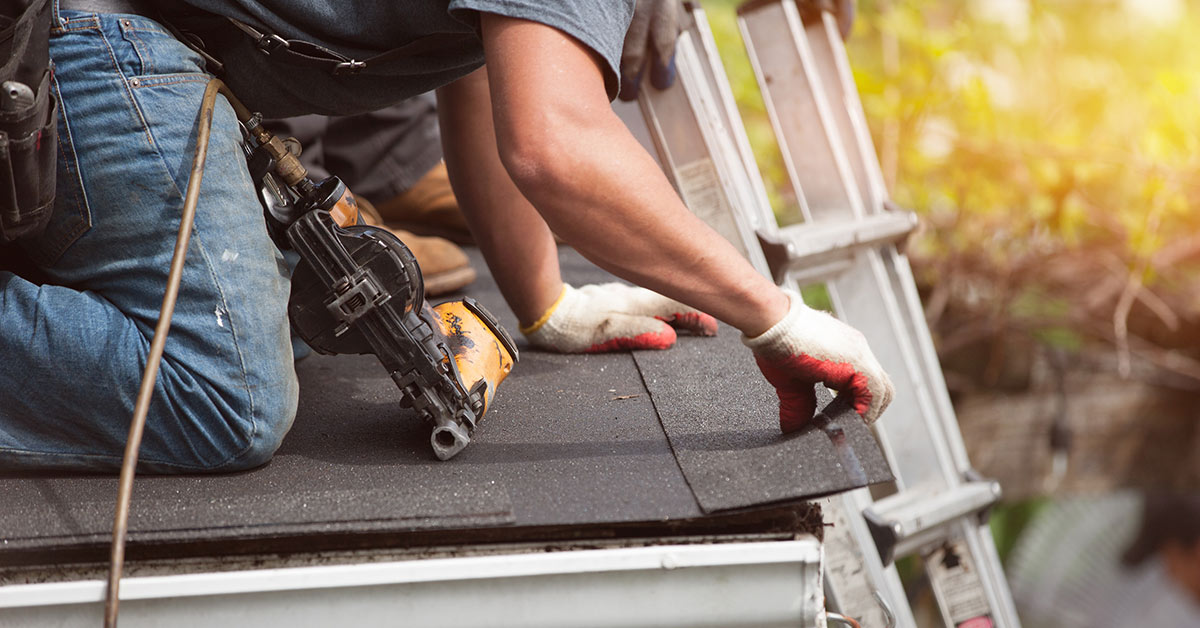
Roofer Near Me
Clear away debris such as leaves, sticks, and branches from your roof
Your roof is an incredibly vital component of your home, safeguarding you and your loved ones from the harsh elements. However, it’s crucial to understand that as time goes on, it may accumulate debris, such as leaves, sticks, and branches, which can compromise its structural integrity and overall performance. That’s why it’s of utmost importance to have a trusted roofer in close proximity who can help eliminate this debris, ensuring that your roof remains in optimal condition and ready to withstand nature’s challenges. Having a professional roofer by your side grants you the peace of mind that your roof is well-maintained and will provide years of reliable service. With their expertise, you can be confident that your home is always protected and your family’s safety is never compromised. So, don’t neglect the care of your roof; invest in the services of a skilled roofer today and enjoy the benefits of a sturdy and dependable roofing system for years to come.
Seal any cracks or gaps to prevent water from entering the home
As a homeowner, you absolutely don’t want to deal with water seeping into your precious abode through unsealed cracks and gaps. Luckily, there’s a roofer near you just waiting to come to the rescue! With their expertise, they can ensure that no unwanted water finds its way into your home. Whether it’s a small crack or a daunting gap, these professionals know how to handle the issue with speed and efficiency. And here’s the best part: you don’t even have to wait for the next storm to address the problem. Act now and reach out to a reputable roofer today to ensure your beloved home stays dry and well-protected. Don’t hesitate – take the proactive step and keep your home watertight with the help of a skilled roofer. Remember, prevention is the best cure, so why wait? Contact them now and enjoy the peace of mind that comes with a secure and watertight home.
Replace any missing or damaged shingles
Your roof is an incredibly important feature of your home’s exterior, and ensuring its protection should always be at the forefront of your mind. The presence of missing or damaged shingles can lead to leaks, water damage, and even compromise the structural integrity of your beloved abode. To mitigate these risks, it is imperative to seek out a reputable roofer in close proximity to your location. With their expertise, they will be able to swiftly replace any missing or damaged shingles, regardless of the scale of the required repair. By enlisting the services of a skilled professional, you can rest assured that your roof will be in optimal condition, ready to bravely withstand the unpredictable elements. Delaying the replacement of asphalt shingles can expose your home to unnecessary hazards, so take action now. Conduct a thorough search for a local roofer without delay, and regain the peace of mind that comes with knowing your home’s protective shield is once again fortified. Take control of your home’s destiny by investing in the care it deserves. Act swiftly, and safeguard your dwelling from the elements for years to come.
Remove moss and algae build-up from the roof surface
Maintaining the condition of your roof is crucial, ensuring not only the aesthetics of your home but also its protection against the harsh elements. Don’t overlook common issues like moss and algae buildup, as they can lead to significant damage if left unattended. Thankfully, you have access to reliable roofers in your area who possess the necessary expertise, equipment, and materials to safely and effectively remove such buildup. By doing so, they restore your roof’s clean and pristine appearance, thereby extending its lifespan.
By taking proactive measures and contacting a local roofer today, you can prevent moss and algae from compromising the integrity of your roof. Remember, neglecting these issues can result in costly repairs down the line, so it’s better to address them promptly. Don’t wait until it’s too late – reach out to a roofer and bring your roof back to its best condition.
In summary, prioritizing the maintenance of your roof goes a long way in preserving its functionality and attractiveness. With the help of experienced professionals, you can safeguard your investment and enjoy a worry-free living environment. Take action now and ensure your roof remains in optimal condition for years to come.

Roofer Near Me
Apply protective sealant to guard against sun damage and high temperatures
Protecting your roof from the elements is crucial, and two of the main culprits are sun damage and high temperatures. Luckily, there’s a solution! By reaching out to a professional roofer in your area, you can prevent these issues with the application of a protective sealant. This amazing sealant acts as a barrier, safeguarding your roof from harmful UV rays and extreme heat. Not only does it offer an extra layer of protection, but it also helps to extend the lifespan of your roof.
Don’t let sun damage or high temperatures wreak havoc on your home’s roof any longer! Take action and contact a reliable roofer near you today. They can apply a protective sealant that will keep your roof in great shape for years to come. Remember, prevention is key when it comes to maintaining a durable and long-lasting roof. So, go ahead and make that call – your roof will thank you!
Taking proactive steps to maintain your roof is crucial for ensuring the safety of your home and its contents, as well as saving money in the long run by avoiding costly repairs. Don’t wait until it’s too late for minor fixes; instead, inspect and repair any issues as soon as possible to protect yourself and your property. Reach out to a professional contractor today to conduct a thorough inspection, clean, and fix any problems with your roof.
By following these simple yet important tips, including annual inspections, debris removal, crack sealing, replacing shingles where necessary, preventing moss and algae build-up, and protecting the sealant on your roof, you can rest assured that your home will remain safe from the elements. Similar to preventive maintenance on a car or regular dental check-ups, investing in prevention now will outweigh the cost of extensive repairs down the road.
Taking care of your roof goes beyond mere maintenance—it’s about safeguarding your home, your loved ones, and your peace of mind. Don’t let negligence compromise the structural integrity of your roof. Make it a priority today and enjoy the benefits of a well-maintained and protected home.
Chattanooga Roofing Company
https://www.google.com/maps?cid=3134983317498625437
https://www.google.com/maps?cid=3134983317498625437
(423) 443-4174
- By: chattroof
- hiring roofer near me, rates of roofer near me, cost of roofer near me, prices of roofer near me, commercial roofer near me, roofer near me rates, roofers near me, roofer near me cost, best roofers near me, roofer near me prices, roofer near me, roofer nearby, roofer in my area, best roofer near me, best roofer nearby, best roofer in my area, local roofer near me, professional roofer near me, hire roofer near me

12 Jun. 2023
Metal Roofing
7 Reasons to Choose Metal Roofing for Your Home or Business
Are you looking to get a new roof for your home or business, but unsure which type of material to choose? With so many different options available on the market, it can be hard to know where to start. Metal roofing is an increasingly popular option that has taken the industry by storm due to its incredible durability, versatility, and aesthetic benefits. If you’re considering metal as a rooftop solution for your property, this blog post will provide 7 compelling reasons why metal roofing should be top of your list. From superior strength against hurricanes and heavy snowfall to being energy efficient and cost-effective – when it comes to selecting a new roof design there are undeniable advantages that metal offers over traditional shingle or tile materials. So read on if you want to discover what makes metal roofs such a game-changer in the field of residential and commercial construction – there’s no doubt you won’t be disappointed!
Durability and Strength – metal roofing is designed to last longer than traditional shingles, making it a more cost-effective option in the long run.
When it comes to protecting your home, durability and strength are crucial considerations for your roofing. Traditional shingles may seem cost-effective initially, but they can quickly become a headache when they fail to withstand the elements. This is where metal roofing comes in. It is designed to last longer and resist damage from wind, rain, and other weather conditions, making it a smart investment that can save you money in the long run. Upgrade to metal roofing today for reliability and attractiveness in one package. Protect your home with a roofing option that is both reliable and visually appealing. Make the switch to metal roofing and enjoy enhanced durability, strength, and cost-effectiveness.
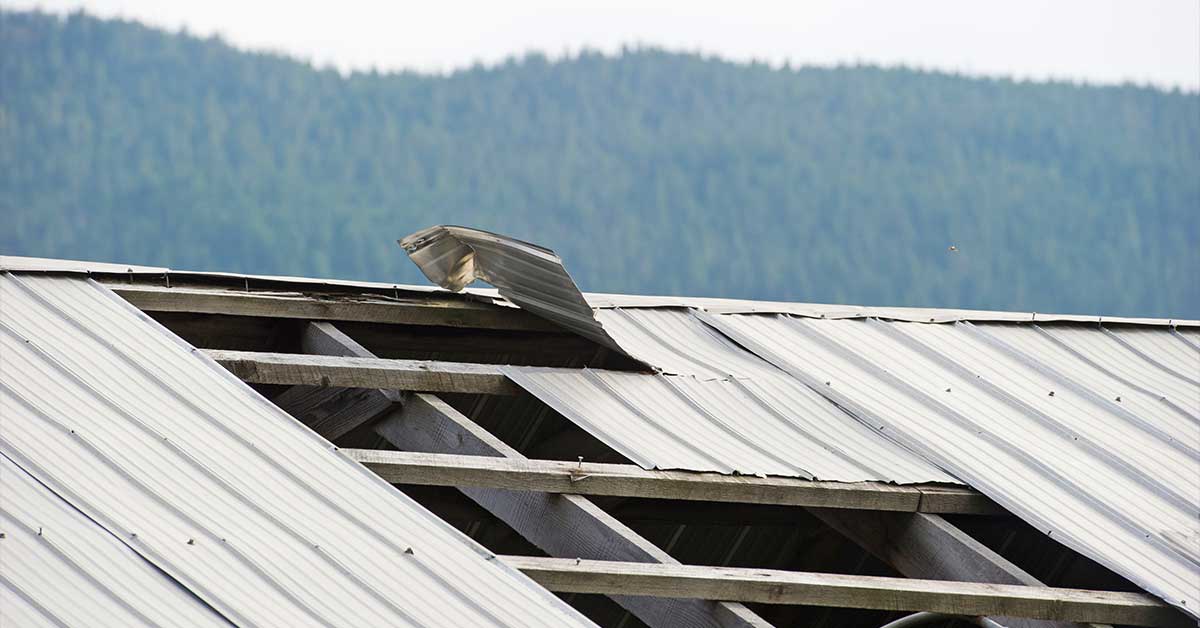
Metal Roofing
Low Maintenance – because metal roofs don’t require as much maintenance, there’s less need for expensive repairs over time.
Homeowners today are seeking ways to minimize the time and money spent on constant repairs and maintenance. That’s where the increasing popularity of metal roofs comes in. With their low maintenance requirements, metal roofs offer a hassle-free solution for every homeowner. Imagine the convenience of not having to worry about shingle damage after each storm or conducting regular leak inspections. By switching to a metal roof, you’ll not only reduce your workload but also gain peace of mind. Moreover, the sleek and modern appearance of a metal roof can significantly enhance the curb appeal of any home. Make the switch to a metal roof today and enjoy a worry-free and stylish solution for your home.
Energy Efficiency – metal roofs can reflect heat from the sun, meaning your home or business will stay cooler during hot summer months.
Are you tired of the scorching summer heat that brings discomfort and sky-high energy costs? Well, worry no more because we’ve got the perfect solution for you: metal roofs! Not only can these roofs withstand the toughest elements, but they also have an unbelievable energy-saving advantage. By reflecting the sun’s heat, they help maintain a cool temperature in your living or working space, reducing the need for excessive air conditioning. Plus, the sleek and modern appearance of metal roofs will give your property a stylish upgrade. So, why wait? Make the switch today and experience a cooler and more comfortable summer season. Say goodbye to heat and hello to energy savings with metal roofs!
Fire Resistance – metal roofing offers better protection against fire and sparks than other materials such as wood or asphalt shingles.
When it comes to safeguarding your home or business from fires, you can never be too cautious. That’s where metal roofing comes in. Unlike wood or asphalt shingles, metal roofing offers exceptional fire resistance. This means that in the event of a fire or even sparks, your metal roof will reliably withstand the danger and ensure the safety of your property.
But metal roofing isn’t just about fire protection; it brings a range of other benefits. From its durability and energy efficiency to its long-lasting performance, metal roofing is a wise investment for any project. With metal roofing, you’ll have peace of mind knowing that your property is well protected against the threat of fire.
So, when you’re thinking about your next project, consider choosing metal roofing. It’s not just a practical choice, but a responsible one too. Protect what matters most with the reliability and strength of metal roofing.
Variety of Color Options – metal roofs come in a wide range of colors that can match your house or building’s exterior design and aesthetic.
Metal roofs offer a wide array of color options to perfectly coordinate with the exterior of your house or building. Whether you prefer a bold statement or a subtle elegance, you can choose from a diverse range of shades that suit your taste and enhance the aesthetic of your property. Gone are the days of settling for a plain and unremarkable roof; with multiple colors available, you now have the freedom to express your personal style and elevate the curb appeal of your home or building. A beautiful and eye-catching metal roof can truly transform the look of your property, adding charm and character. Upgrade your roof with a vibrant and durable metal solution that not only protects your investment but also enhances its overall visual appeal. With endless color possibilities, the options are limitless, allowing you to create a truly customized and remarkable exterior. Don’t let your roof go unnoticed – make a statement and make your property stand out from the rest.

Metal Roofing
Lightweight Design – the lightweight design of a metal roof makes it easier to install and doesn’t add excessive weight to the structure that it is protecting
Metal roofs are a popular choice due to their durability and longevity. However, their protective covering offers a major advantage beyond strength: lightweight design. Unlike traditional roofing materials, metal roofs are easy to install and won’t burden the structure they protect. This is particularly crucial for older buildings that may not handle the weight of a heavier roof. Opting for a lightweight metal roofing option ensures the long-term safety and integrity of the structure. Building owners can rest assured that their properties will remain secure for years to come.
Eco-Friendly – most types of metal roofing are recyclable and some are even made from recycled materials, so they are an environmentally friendly choice for any home or business owner looking to reduce their carbon footprint.
Are you interested in reducing your environmental impact? Look no further! Choosing a metal roof for your home or business is a fantastic eco-friendly option. Not only are most metal roofing types recyclable but some are made from recycled materials themselves, making them a truly sustainable choice. On top of that, metal roofs are built to last for decades and require minimal maintenance. Talk about a smart investment for environmentally-conscious property owners! With the rising demand for eco-friendly solutions, it’s no surprise that more and more people are turning to metal roofs. Join the movement and make a positive impact on the environment by opting for a metal roof today!
Metal roofing is an optimal choice for many reasons. With superior durability, low-maintenance requirements, and energy efficiency, it offers countless advantages over other materials. Additionally, its fire resistance capabilities provide added peace of mind. The wide range of color options allows for customization, while the lightweight design ensures easy installation. Moreover, choosing metal roofing helps reduce your carbon footprint. Investing in this roofing option is a smart decision that provides years of reliable protection and long-term savings. To learn more about whether it’s the right fit for you, consider contacting a trusted local roofing professional. Make the most of your decision and enjoy the benefits of a metal roof!
Chattanooga Roofing Company
https://www.google.com/maps?cid=3134983317498625437
https://www.google.com/maps?cid=3134983317498625437
(423) 443-4174
- By: chattroof
- hiring metal roofing, rates of metal roofing, cost of metal roofing, prices of metal roofing, metal roofing, metal roofing rates, metal roofing near me, metal roofing cost, metal roofing in my area, metal roofing prices, commercial metal roofing, metal roofing nearby, best metal roofing, best metal roofing near me, best metal roofing nearby, best metal roofing in my area, local metal roofing, professional metal roofing, hire metal roofing
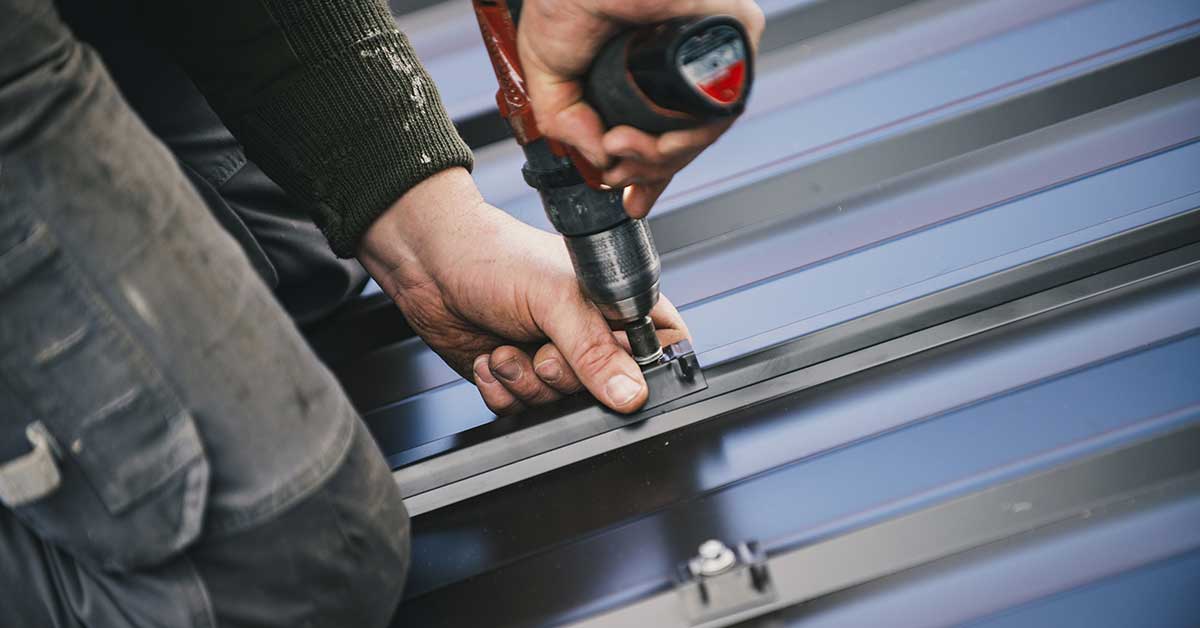
06 Jun. 2023
Roofing Installation
Tips for a Seamless, High-Quality Roofing Installation
Time to replace your worn and outdated roofing? Investing in a new high-quality roof can not only protect your home against the elements, but it is also an opportunity to upgrade the look of your house altogether. With so many choices for material and installation methods available, however, finding a seamless method that fits both within budget and expectation can be tricky. In this blog post, we’ll provide you with key tips for selecting materials and completing a successful roof installation process outfitted with beautiful results – without breaking the bank! So come on in – let’s go over what you need to know when considering how best to update or install your roof.
Gather information and research the type of roofing system best suited for your home
Choosing the perfect roofing system for your home is a critical decision. With numerous options available, it can be overwhelming to select one that meets your specific needs. This is where roofing installation comes into play. They provide invaluable assistance, helping gather relevant information and conducting thorough research to identify the optimal roofing system for your home. Whether you need a flat or sloping roof, or metal or asphalt shingles, a professional roofing installer will serve as your trusted guide, enabling you to make an informed decision. Their expertise and experience guarantee not only an aesthetically appealing roof but also reliable protection for your home. You can rely on these experts to ensure that you receive the best value for your money, resulting in a safe, secure, and beautiful home. Transform your house into the haven you deserve with the assistance of roofing installation professionals. Trust them to deliver excellence at every step of the process. Benefit from their knowledge and expertise today!
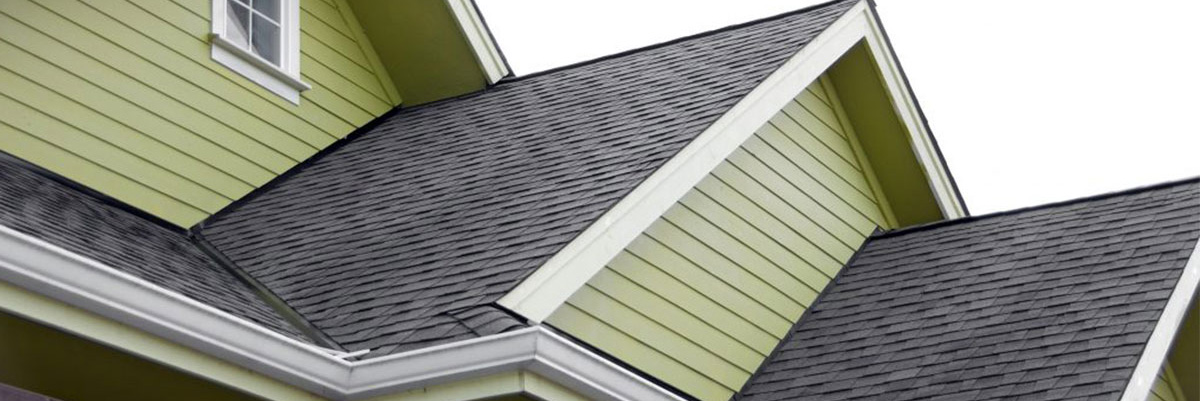
Roofing Installation
Find a qualified roofing contractor with experience, insurance, and good reviews
Ensuring the successful installation of a new roof requires careful consideration. Your choice of a qualified roofing contractor is paramount to safeguarding your investment. Experience matters, as it guarantees expertise in protecting and preserving your roofing needs. Equally important is insurance coverage, which shields you from financial liabilities for accidents or damages that may arise during the installation process. But that’s not all! Prioritize contractors who boast good reviews from delighted customers, a testament to their commitment to excellence and outstanding customer service. Take the time to conduct thorough research, scrutinizing potential contractors to ensure they possess all these critical qualities. Remember, a successful roof installation project begins with finding the right contractor who meets and exceeds your expectations. Let’s make roofing projects a breeze! Choose wisely and embark on your journey to a durable, dependable, and dazzling roof!
Ask about warranties, financing options, and any other applicable discounts
Investing in a new roof requires thorough research and attention to detail. When choosing a roofing contractor, it is crucial to inquire about warranties, financing options, and available discounts. A reliable contractor will provide comprehensive information about their warranty coverage, including duration and what is included. Financing options can make the investment more manageable, allowing you to pay over time. Additionally, many contractors offer promotions and special deals throughout the year, so be sure to inquire about any applicable discounts. Asking these important questions ensures that you not only get the best value for your investment but also the peace of mind of knowing your roof is protected for years to come. Don’t rush the process; take your time to gather the information you need. By doing so, you’ll make a well-informed decision while enjoying the benefits of a solid and secure roof.
Have the contractor inspect the roof to assess the condition and install appropriate materials
Taking care of your roof is vital for the long-term well-being of your home. To ensure this, it is important to have a professional contractor regularly inspect it and install suitable materials during roofing installation. Whether you require a repair or wish to upgrade to more durable materials, entrusting the job to a skilled contractor will provide reassurance that your roof is in capable hands. By investing in the care and maintenance of your roof, you are not only safeguarding the safety and longevity of your home but also enhancing its overall value and appeal. Don’t overlook the significance of a well-maintained roof – it acts as a protective shield against the elements, prevents costly repairs, and contributes to your peace of mind. Make the smart choice today and prioritize the care of your roof for countless worry-free years to come.
Make sure the contractor is aware of local building codes and follows all safety regulations
Roof installation is a major undertaking. It’s crucial to ensure that the contractor you hire is well-versed in local building codes and safety measures. Familiarizing yourself with the roofing installation regulations in your area is essential to safeguard yourself and your property from legal issues. You deserve to have confidence in the expertise of the team working on your roof. Before making a hiring decision, take the time to verify the contractor’s compliance with local building regulations and review their safety records. By being diligent in these matters, you can have peace of mind knowing that your roofing installation project is in capable hands. So, don’t risk any potential problems – prioritize the safety and quality of your roof today!

Roofing Installation
Keep an eye on progress during installation to ensure quality workmanship is followed
Installing a new roof is a significant investment, and ensuring high-quality workmanship is crucial. One effective way to achieve this is by closely monitoring the installation progress. This allows you to promptly address any potential issues before they escalate into more expensive problems in the future. Whether you’re hiring professionals or handling the installation yourself, taking the time to oversee the process and uphold your standards is essential. By remaining vigilant throughout the installation, you will be able to enjoy the peace of mind that comes with a durable and reliable roof. With its long-lasting benefits, your new roof will continue to provide protection and value for years to come. So, don’t underestimate the importance of actively participating in the installation process and safeguarding your investment.
Installing a roofing system is a significant home investment. Therefore, it’s crucial to make informed decisions and prioritize safety. To ensure a successful installation, follow these steps:
- Research Your Options: Explore different roofing systems that suit your needs and preferences. Consider factors like durability, energy efficiency, and maintenance requirements.
- Find a Qualified Contractor: Look for experienced and reputable roofing contractors. Check their qualifications, licenses, and customer reviews. Request multiple quotes to compare prices and services.
- Understand Regulations and Codes: Familiarize yourself with local regulations and building codes. Ensure that your chosen roofing system meets the required standards. This will prevent any legal issues in the future.
- Explore Financing Options: Roof replacement or repair can be costly. Research financing options or discounts that may be available. Consider long-term savings and the potential return on investment.
- Ensure Proper Installation: During installation, be vigilant about quality workmanship. Supervise the process to ensure that safety protocols and guidelines are followed. This attention to detail will help maximize the longevity of your roof.
By taking these precautions, you can protect your investment and save money in the long run. Don’t wait—start your roofing project now and enjoy the benefits of a well-installed and long-lasting roofing system!
Chattanooga Roofing Company
https://www.google.com/maps?cid=3134983317498625437
https://www.google.com/maps?cid=3134983317498625437
(423) 443-4174
- By: chattroof
- best roofing installation in my area, local roofing installation, professional roofing installation, commercial roofing installation, roofing installation, rates of roofing installation, roofing installation near me, cost of roofing installation, roofing installation nearby, prices of roofing installation, roofing installation in my area, roofing installation rates, roofing installation service, roofing installation cost, roofing installation services, roofing installation prices, roofing installation company, benefits of roofing installation, best roofing installation, best roofing installation service, best roofing installation company, best roofing installation near me, best roofing installation nearby
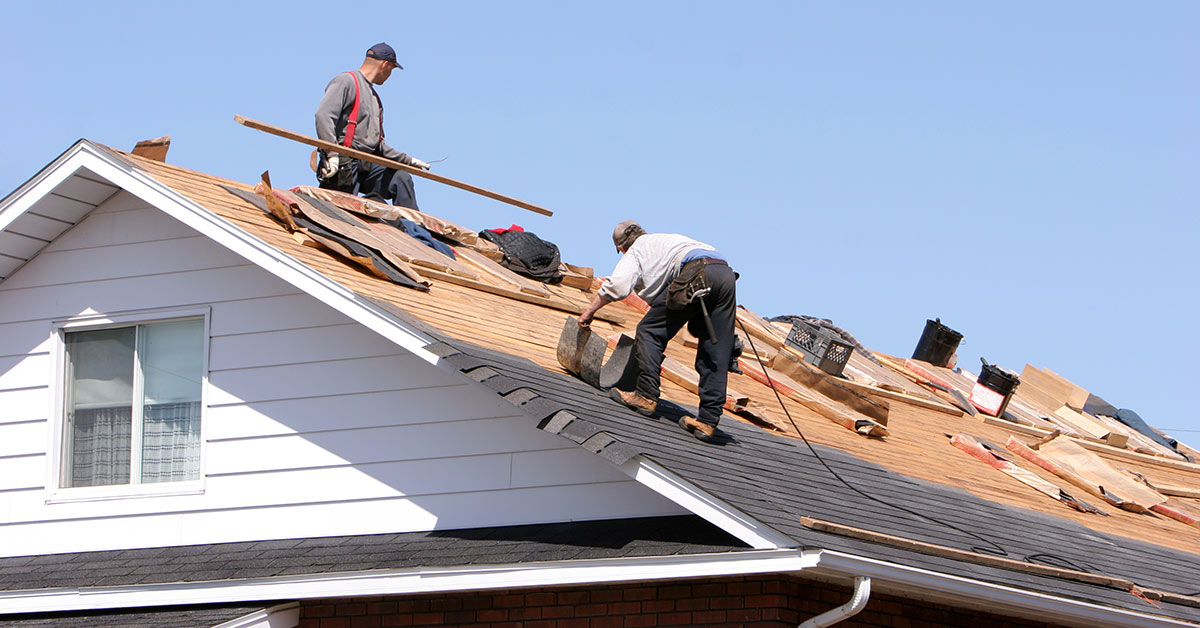
29 Mar. 2023
How Much Does Roofing Replacement Cost?
Ever wonder, “How Much Does Roofing Replacement Cost?” It’s important to have a good roof to protect your home from bad weather. If your roof is damaged or old, it can cause leaks, mold, and damage to your home. This is why it’s important to know how much it will cost to replace your roof so you can plan and budget. In this guide, we’ll talk about how much it costs to replace a roof, what affects the cost, and how you can raise or lower the cost.
How Much Does Roofing Replacement Cost?
The average cost of roofing replacement is a wide range. Replacing the roof on a 2,000-square-foot home can cost between $6,000 and $12,000. The price depends on what type of roofing material you choose. Asphalt shingles are the most common and cost around $3 to $5 per square foot. Metal roofing costs more at $5 to $12 per square foot, and tile roofing is the most expensive at $10 to $20 per square foot. Furthermore, labor, materials, and disposal fees can also affect the cost.
Factors That Raise the Average Price of a Roof Replacement
1. Expensive Roofing Materials
Some types of roofing materials cost more than others, like better quality shingles, metal roofing, and tile roofing. These materials are more expensive than traditional asphalt shingles but can last longer and look better. However, they come with extra costs, such as installation fees and the need for more support.
2. Steep Roof Slope
If your roof has a steep slope, it can cost more to replace. A steep roof needs extra safety equipment and specialized techniques, which can cost more in labor. The steeper the roof, the harder it is to work on, which adds to the cost.
3. Complex Roof Design
If your roof has many angles, valleys, or hips, it can cost more to replace. A complex roof needs more materials and labor, and it requires specialized techniques for proper installation.
4. Removal of Existing Roofing Material
If the old roofing material needs to be removed before installing the new material, it can cost more. This process needs more labor and disposal fees, which adds to the cost.
Factors That Lower the Average Price of a Roof Replacement
1. Affordable Roofing Materials
Asphalt shingles and composite roofing are more affordable than premium materials like metal and tile. They may not last as long, but they still protect your home and are more budget-friendly.
2. Easy Accessibility
If your roof is easy to access, it can cost less to replace. An accessible roof doesn’t need extra safety equipment or specialized techniques, which saves on labor costs.
3. Simple Roof Design
A simple roof design, like a basic gable roof, can cost less to replace. A simple roof needs fewer materials and less labor, which saves money.
4. No Removal of Existing Roofing Material
If the old roofing material doesn’t need to be removed, it can cost less to replace. This eliminates the need for extra labor and disposal fees, which lowers the cost.
Conclusion
The cost of replacing a roof depends on several factors, including the size, slope, accessibility, and type of roofing material chosen. Premium materials like better quality shingles, metal roofing, and tile roofing cost more, while budget-friendly options like asphalt shingles and composite roofing cost less. Talk to a professional roofing contractor to get an accurate estimate for your home. Choosing the right roofing option for your budget and needs is essential for protecting your home and ensuring its longevity.
- By: chattroof
visit Us: 529 S. Germantown Rd. Chattanooga, TN 37411
email us: ted@chattanoogaroofingco.com
24/7 Emergency call (423) 308-ROOF

